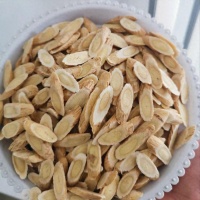How to lose weight after giving birth to polycysts? Scientific Methods & Health Guidance
Postpartum polycystic ovary syndrome (PCOS) is a common endocrine and metabolic disorder that affects about 5%-10% of women of childbearing age. PCOS can not only cause menstrual irregularities,InfertilityIt can also cause metabolic abnormalities such as weight gain and insulin resistance. For postpartum women, weight management is particularly important, and scientific weight loss methods can not only help restore the figure, but also improve PCOS symptoms and improve overall health.
Difficulties and misunderstandings of postpartum polycystic weight loss1. The challenge of hormonal imbalances
Patients with PCOS often have high levels of androgen and insulin resistance, which can lead to fat accumulation, especially in the abdomen. Traditional dieting for weight loss may not solve the root cause of the problem, and may even aggravate endocrine disorders due to nutritional imbalance.
2. Plagued by a decrease in metabolic rate
Postpartum women usually have a decrease in their basal metabolic rate, and due to the special needs of breastfeeding, it is often difficult to achieve the desired weight loss results by relying on exercise or dieting alone.
3. Common weight loss myths
Many women blindly pursue rapid weight loss, choosing extreme dieting or excessive exercise, which can not only trigger health problems, but also easily lead to weight regain. In addition, weight loss methods that ignore endocrine regulation are often difficult to last.
Solution: Scientific and practical postpartum polycystic weight loss method1. Diet: scientific collocation, balanced nutrition
(1)High-protein diet
Protein helps maintain muscle mass and increases metabolic rate. It is recommended to choose high-quality protein sources such as fish, lean meat, and legumes, with a daily intake of 20%-30% of the total calories.
(2)Low GI diet
Choosing foods with a low glycemic index (GI), such as whole grains, oats, vegetables, etc., can help stabilize blood sugar, reduce insulin secretion, and improve insulin resistance.
(3)Healthy fat intake
A moderate intake of healthy fats, such as olive oil, nuts, fish oil, etc., can help regulate hormone levels and improve endocrine status.
(4)Avoid overeating at regular intervals and rations
It is recommended to eat small, frequent meals every day, avoid long-term fasting or overeating, and keep blood sugar stable.
2. Exercise plan: Gradual and consistent
(1)aerobics
Do aerobic exercise 3-5 times a week, such as brisk walking, swimming, yoga, etc., for more than 30 minutes each time. Aerobic exercise not only burns fat, but also improves cardiopulmonary function and increases metabolic rate.
(2)Strength training
Strength training 2-3 times a week, such as dumbbells, elastic bands, etc., can help increase muscle mass and increase basal metabolic rate. Postpartum women can do proper strength training under the guidance of a doctor.
(3)An increase in daily activities
Increasing the amount of daily activities, such as walking more and doing housework, can also help burn calories and improve metabolic status.
3. Habits: Details determine success or failure
(1)Get enough sleep
Getting 7-8 hours of quality sleep a day helps regulate endocrine and improve insulin resistance. Lack of sleep increases the secretion of appetite hormones, leading to weight gain.
(2)De-stress and relax
Long-term stress can lead to elevated cortisol levels, which can lead to fat accumulation in the abdomen. Postpartum women can relieve stress and maintain a good attitude through meditation, deep breathing, etc.
(3)Regular monitoring
It is recommended to regularly monitor weight, body fat percentage, hormone levels and other indicators to adjust the weight loss plan in time. At the same time, it is recommended to carry out it under the guidance of a professional doctor or nutritionist to ensure the safety and effectiveness of the weight loss process.
4. Professional Guidance:Help Pregnancy NetworkSupports postpartum health
For postpartum polycystic women, scientific weight loss methods need to be combined with personal physique, symptoms and lifestyle habits. As a professional maternity health service platform, HelpPregnancy.com provides personalized postpartum recovery programs, including dietary advice, exercise guidance, psychological support, etc. Through the professional guidance of HelpPregnancy.com, postpartum polycystic women can achieve their weight loss goals more safely and effectively and restore their healthy posture.
Lose weight healthily and regain your self-confidencePostpartum polycystic weight loss is a process that requires patience and perseverance, and the key lies in a scientific approach and a healthy lifestyle. Through reasonable diet, moderate exercise, and good living habits, every postpartum woman can find a weight loss plan that suits her and achieve a win-win situation of health and self-confidence. If you are struggling with postpartum polycystic weight loss, you may wish to consult the professional team of Pregnancy Help.com for more personalized guidance and assistance.
相关知识
How to have a healthy body
How to Define SMART Fitness Goals and Stick to Achievable Routines
Stress and Distress During Pregnancy: How to Protect Both Mother and Child
How to Eat to Be Healthy?
How to Build Cardiovascular Endurance to Achieve Your Fitness and Health Goals
Breastfeeding, breastfeeding and postpartum weight loss: myth or reality?
英语演讲稿 How to Stay Healthy(精选18篇)
英语作文:艰难的减肥过程The Long Way to Lose Weight
Hydration: How to Stay Hydrated in 6 Steps
How to set realistic fitness goals (and achieve them!)
网址: How to lose weight after giving birth to polycysts? Scientific Methods & Health Guidance https://m.trfsz.com/newsview1305897.html
